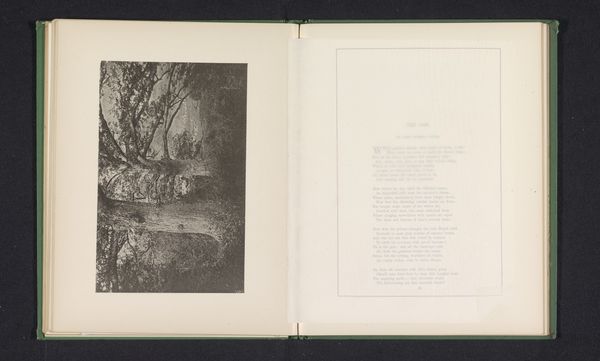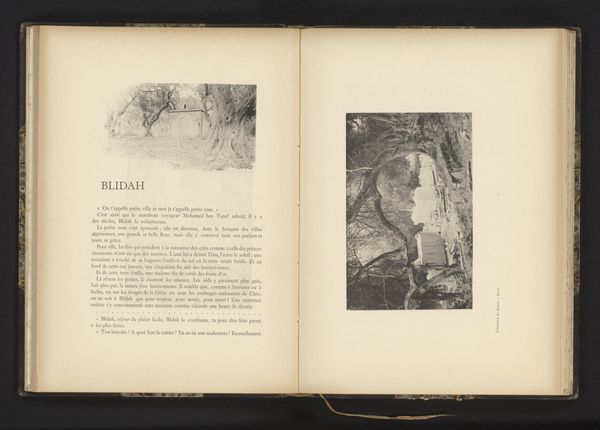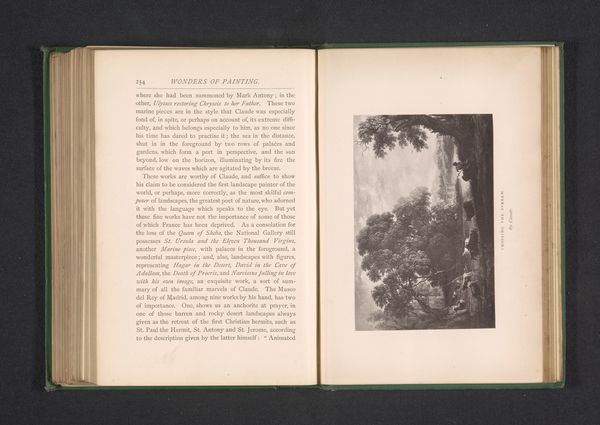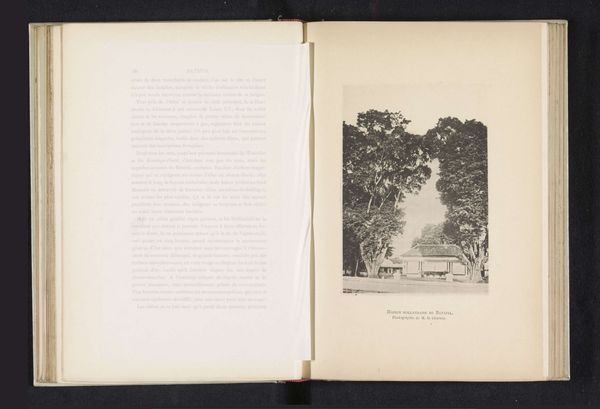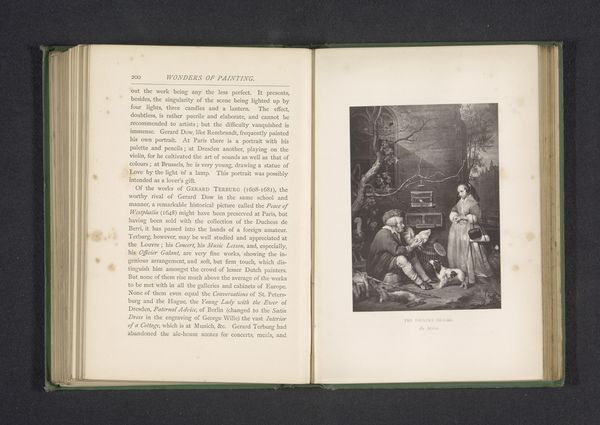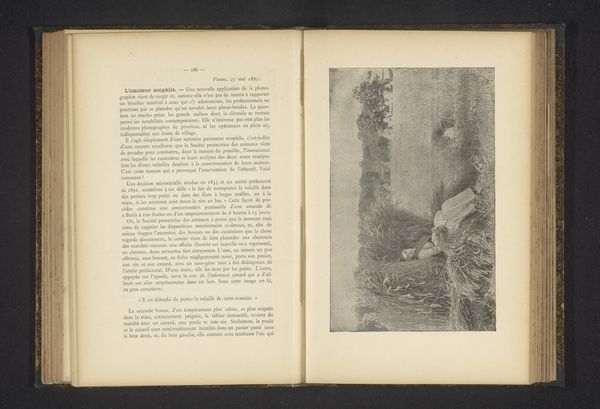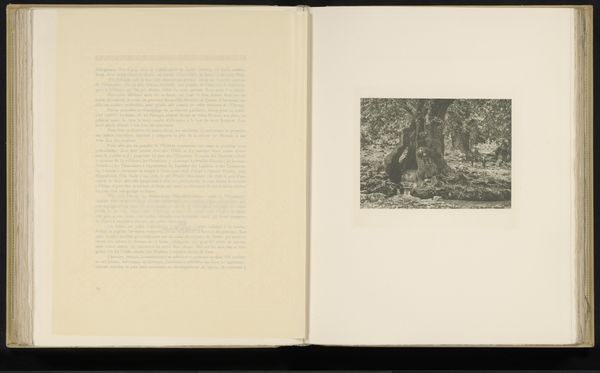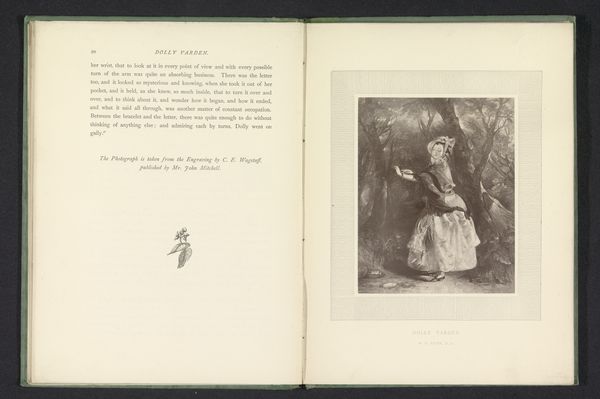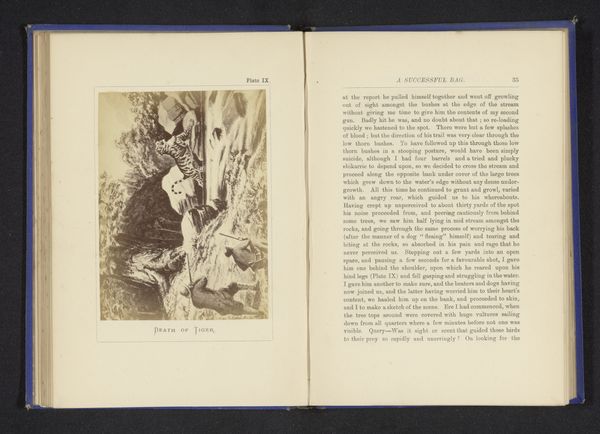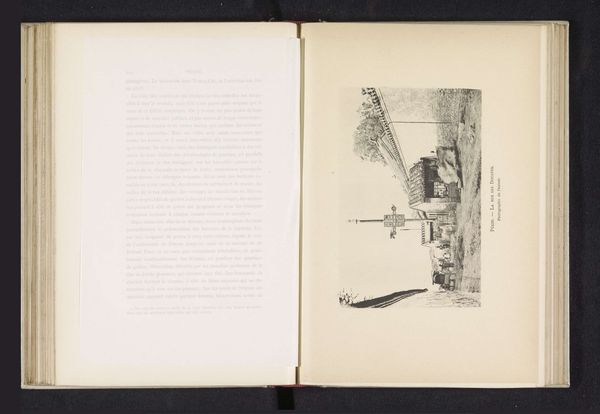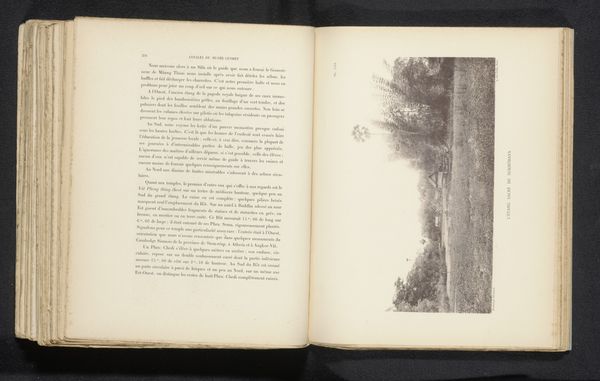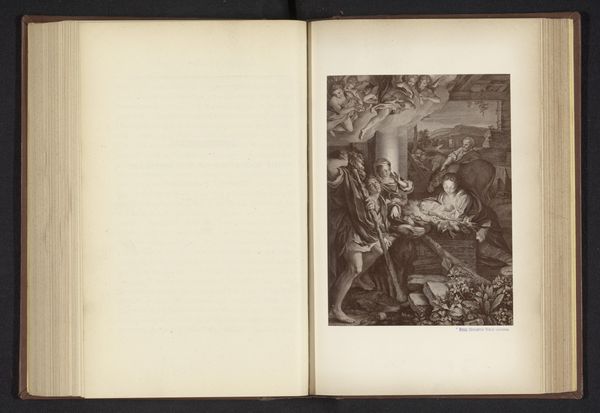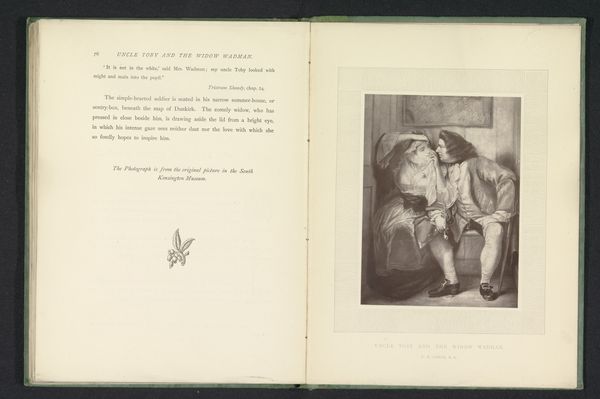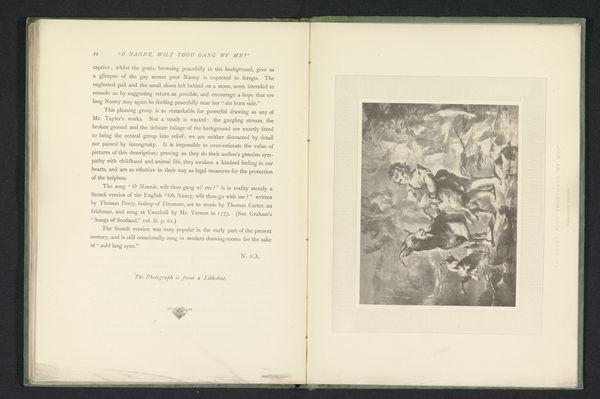
#
aged paper
#
homemade paper
#
paper non-digital material
#
paperlike
#
personal journal design
#
paper texture
#
folded paper
#
delicate typography
#
letter paper
#
thin font
#
building
Dimensions: height 149 mm, width 177 mm
Copyright: Rijks Museum: Open Domain
Curator: I am immediately struck by the tranquility, almost a haunting stillness, in this monochrome scene. Is that Harvard College? Editor: Indeed. We're looking at "Gezicht op gebouwen van Harvard College te Cambridge," or "View of Buildings of Harvard College in Cambridge," created by William James Stillman sometime before 1876. The delicate lines suggest it's a print, perhaps an etching, on what appears to be aged paper. Curator: The perspective, looking down that long avenue of trees, almost funnels the eye towards the buildings. But those overhanging branches create a kind of visual canopy, lending a feeling of protection, tradition... almost a secret garden. Do the trees signify something about academia, about growth and knowledge? Editor: I think that's certainly a valid reading. From a historical standpoint, Stillman was deeply involved in the artistic and intellectual circles of his time, interested in promoting Pre-Raphaelite aesthetics. These themes explored truth to nature, connecting landscapes to socio-cultural themes, which might explain your reading of protective, growing "trees." Also, consider the time. What kind of institutions accepted what kinds of people during Stillman's time? Curator: It also makes me consider Harvard's symbolism— a locus of intellectual power, elitism and exclusivity. So many layers intertwined within this deceptively simple image. Editor: It brings up crucial questions about the power structures embedded within even seemingly benign campus views. Whose perspective are we seeing here? And whose stories are missing? Curator: I love that visual tensions. The stark geometry of the buildings versus the organic forms of nature… it's almost a battle for dominance within the frame. Editor: Exactly. And Stillman himself lived a fairly unorthodox life, serving as a foreign correspondent, experiencing the world differently from most of the students walking through these hallowed halls. What social, class, cultural factors might be affecting our reading of it even today? Curator: Food for thought, definitely. Thanks, this perspective shifts my understanding of the piece profoundly. It prompts necessary questions on societal privilege and historical vantage. Editor: My pleasure. I find that's what great art always does— making you consider not just what you're seeing, but how, and why.
Comments
No comments
Be the first to comment and join the conversation on the ultimate creative platform.
